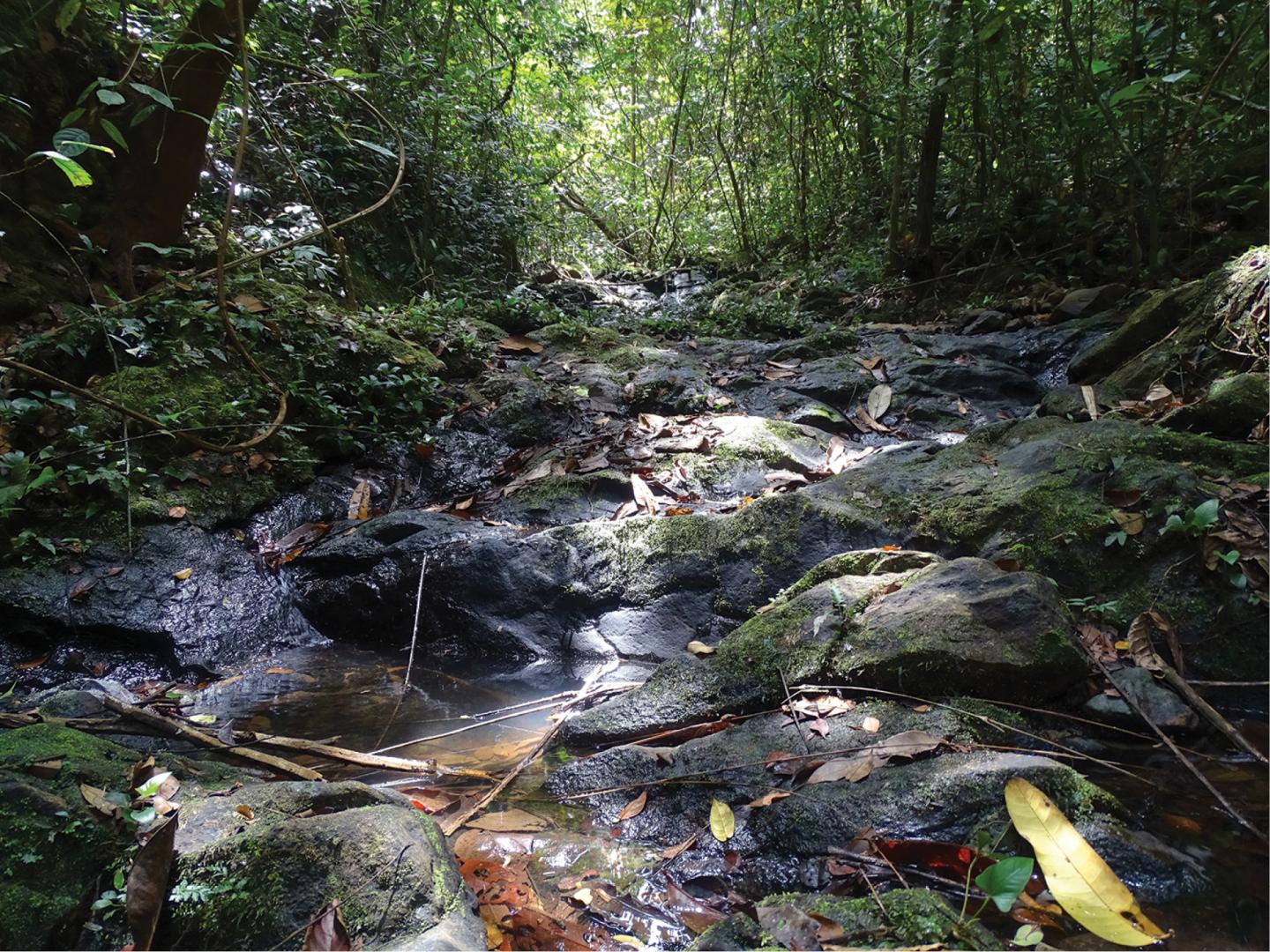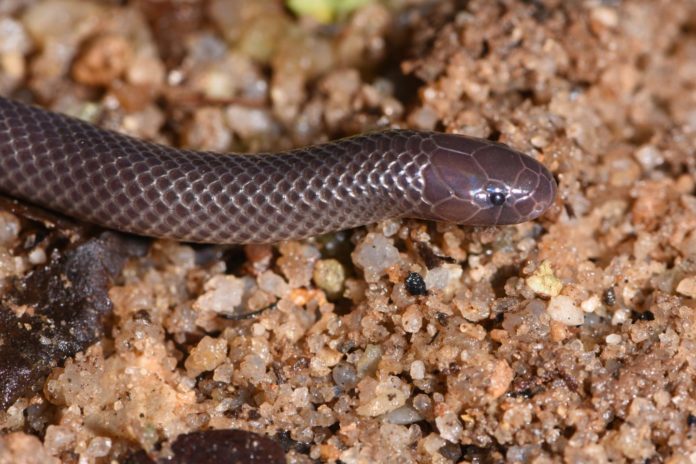The stiletto snakes or burrowing asps currently comprise 22 or 2 valid species. Most species are restricted to sub-Saharan Africa where they occur in a wide range of habitats from semi-deserts to rainforests; only two occur in the Middle East and Arabia. These fossorial and venomous snakes are famous for their unique skull anatomy and venom delivery system, enabling them to use a single fang to bite, with a closed mouth, in a lateral stabbing movement.
On recent surveys in north-western Liberia and south-eastern Guinea, an international team of researchers found three stiletto snakes which were later identified as a species previously unknown to science.
This discovery adds further evidence for the status of the western part of the Upper Guinea forest zone as a center of rich and endemic biodiversity.
The new species, called Atractaspis branchi or Branch’s Stiletto Snake, was named to honor to the recently deceased South African herpetologist Prof. William Roy (Bill) Branch, a world-leading expert on African reptiles.

CREDIT
Mark-Oliver Roedel
The new species lives in primary rainforest and rainforest edges in the western piece of the Upper Guinea forests. Branch’s Stiletto Snake is in all probability endemic to this region, a threatened biogeographic region definitely known for its one of a kind and differing fauna.
The first specimen of the new species was gathered during the night time from a steep bank of a small rocky creek in a marsh evergreen rainforest in Liberia. Upon picking it up, the snake tried to hide its head under body loops, bending it at an almost right angle, so that its fangs were partly visible on the sides.
Then, it repeatedly stroke. It is also reported to have jumped distances almost as long as its entire body. The other two specimens used for the description of the species were collected from banana, manioc and coffee plantations in south-eastern Guinea, about 27 km apart.

CREDIT
Mark-Oliver Roedel
Scientists noted, “The discovery of a new and presumably endemic species of fossorial snake from the western Upper Guinea forests thus is not very surprising. However, further surveys are needed to resolve the range of the new snake species, and to gather more information about its ecological needs and biological properties.”
The study is published in the Zoosystematics and Evolution.
